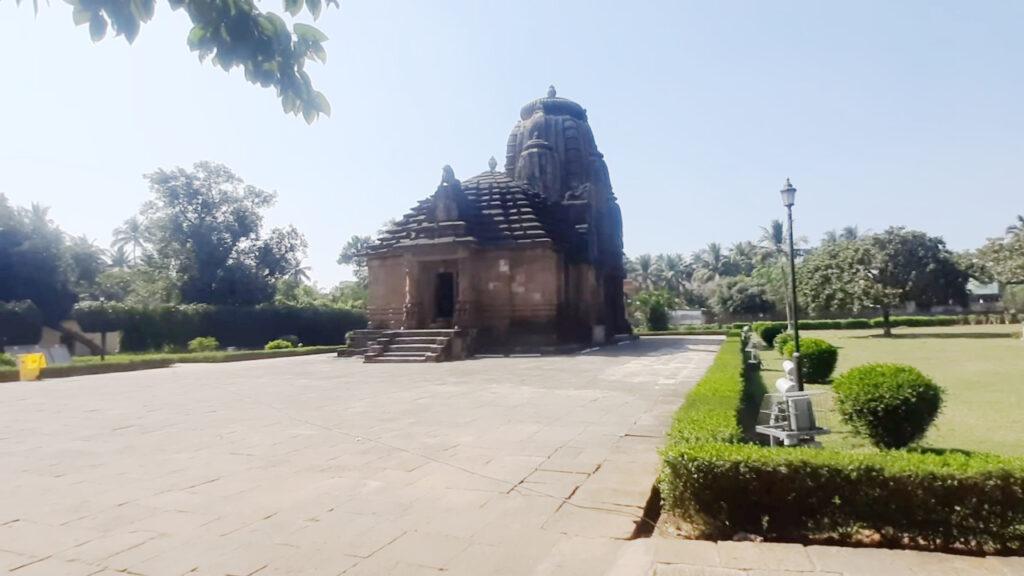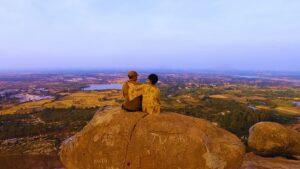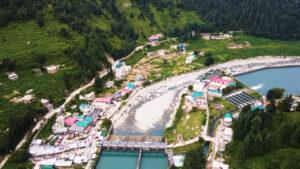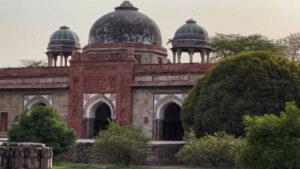Rajarani Temple History
Rajarani Temple is an 11th-century Hindu temple located in Bhubaneswar, the capital city of Odisha, India. Rajarani Temple is a masterpiece of Odia architecture and a symbol of the cultural and religious diversity of the region.
Rajarani Temple was originally known as Indreswara or Indralingesvara, after its builder, Indraratha, a prominent ruler of the Somavamsi dynasty. The Somavamsis were a clan of kings who migrated from central India to Odisha in the 10th century and established their rule over the region.
Rajarani Temple Architecture
- Rajarani Temple is remarkable for its architectural style and ornamentation. The temple has a Pancha Ratha plan, which means that it has five projections or pages on each side. The pages are decorated with miniature towers called anga-shares that resemble the main tower.
- The tower itself has clusters of turrets called urushringas that give it a round shape. The temple also has a richly carved doorway with a navagraha panel (nine planets) on its lintel.
- The temple walls are adorned with sculptures of beautiful women in various poses and moods, such as holding a branch, playing an instrument, looking into a mirror, or embracing a lover. These women are known as alasa kanyas (indolent maidens) or salabhanjikas (breaking branches).
Rajarani Temple Deity
Rajarani Temple is dedicated to Shiva, one of the principal deities of Hinduism. There are no images of Shiva or any other god inside the sanctum. Instead, there are niches on the outer walls that contain sculptures of various deities, such as Parvati, Ganesha, Kartikeya, Surya, and Lakshmi-Narayana. The temple also has erotic carvings of women and couples on its walls, which have earned it the nickname of “love temple”.
Rajarani Temple Opening and Closing Timings
The opening and closing timings of Rajarani Temple are as follows:
- The temple is open daily from 8:00 AM to 5:00 PM.
- The temple is closed on public holidays.
Rajarani Temple Ticket Price
- The entry fee for adults is INR 5, for foreigners is INR 250, and for children is free.
Best time to Visit Rajarani Temple
The best time to visit Rajarani Temple is from October to March when the weather is pleasant and conducive for sightseeing. The temperature during this time ranges between 20°C to 30°C, making it ideal for outdoor activities.
How to Reach Rajarani Temple
- The best way to reach Rajarani Temple is by taking a flight from India to Bhubaneswar. There are several airlines that offer flights from major Indian cities like Delhi, Mumbai, Bengaluru, Hyderabad, Chennai, etc. to Bhubaneswar. The flight duration varies from 2 to 4 hours depending on the number of stopovers and layovers.
- From Bhubaneswar airport, you can take a taxi or a bus to Rajarani Temple, which is about 6 km away. The journey takes about 15 minutes by road. Alternatively, you can also take a train from India to Bhubaneswar railway station, which is about 4 km away from Rajarani Temple. The journey takes about 2 hours by train.
- You can also visit other nearby attractions in Bhubaneswar, such as Lingaraj Temple, Mukteshwar Temple, Khandagiri and Udayagiri Caves, Nandankanan Zoological Park, Dhauli Shanti Stupa, and Odisha State Museum.
Near By Attraction Rajarani Temple
- Lingaraja Temple: Located in close proximity to the Rajarani Temple, the Lingaraja Temple is one of the most prominent and revered temples in Bhubaneswar. Dedicated to Lord Shiva, it boasts remarkable architecture and intricate carvings.
- Mukteshwar Temple: This temple is known for its elegant architecture and beautiful sculptures. Dedicated to Lord Shiva, it features a unique torana (arched gateway) adorned with delicate carvings.
- Udayagiri and Khandagiri Caves: These ancient rock-cut caves are situated nearby and offer a glimpse into Jain ascetic life through inscriptions and carvings. The caves provide historical and cultural insights.
- Dhauli Hill: Known for the Shanti Stupa (peace pagoda) and the rock edicts of Emperor Ashoka, Dhauli Hill is a serene location with panoramic views. It holds historical importance and is associated with Emperor Ashoka’s transformation.
- Nandankanan Zoological Park: A short distance away from the temple, this zoological park is renowned for its collection of rare animals, including white tigers and Indian pangolins. It also features a botanical garden.
- Odisha State Museum: Displaying a rich collection of artifacts, sculptures, paintings, and archaeological treasures, this museum offers insights into Odisha’s history, art, and culture.
- Kedar Gouri Temple: Dedicated to Lord Shiva and Goddess Gouri, this temple showcases intricate carvings and is a great example of Odishan architecture.
- Ratnagiri Buddhist Excavation Site: For history enthusiasts, this site reveals the remains of a flourishing Buddhist monastery and provides insights into Buddhism’s presence in the region.
- Regional Science Centre: An educational and interactive attraction for families and children, the center offers various exhibits related to science, technology, and innovation.
- Raja Rani Mandap: Not to be confused with the Rajarani Temple, this open-air pavilion features beautifully carved sculptures and is a great place for relaxation and admiring art.
Rajarani Temple is a must-see destination for anyone who loves history, culture, and art. It showcases the glory and diversity of Odisha’s history and culture. Don’t miss this opportunity to experience Rajarani Temple, one of the most beautiful and unique temples in India.




